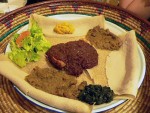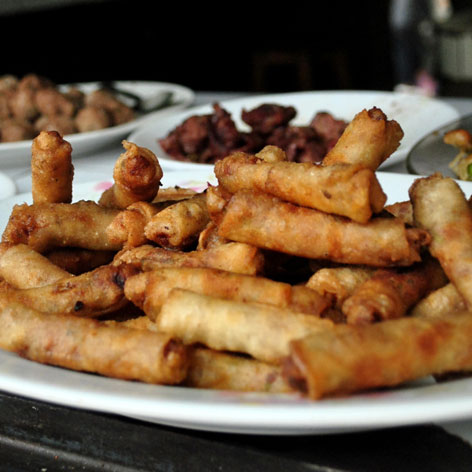
Nem, a spring roll-like street food in Madagascar.
Near the daily market of Antsirabe, the pleasant hillside town of Madagascar’s highlands (and third-largest city in the country), women with enormous bowls of batter sit next to sizzling pots of oil over low charcoal stoves. While crouching or sitting on wooden stools, they fan their flames and plop their freshly fried goods into mountainous piles of steaming fresh snacks. Also lining the streets are small display boxes filled with bowls of breads, noodles, salads, even spaghetti. Other vendors mingle with the crowd, hawking their wares to shoppers while balancing plastic containers atop their heads. While the Malagasy staple food—heaping servings of plain rice—is as simple as can be, street food is a parade of flavors. Here are a few favorite dishes.
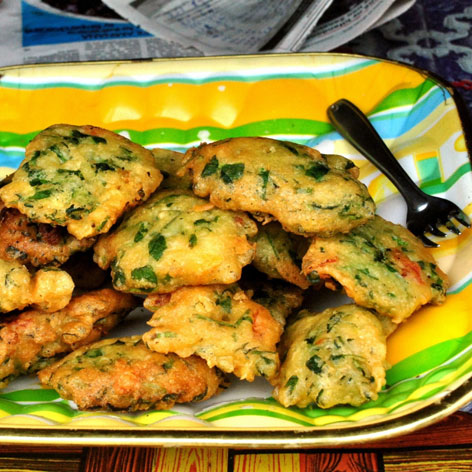
Mofo-anana
In Malagasy, mofo means bread while anana translates as leafy greens, giving mofo anana or “leafy greens bread” a much healthier name than it deserves. Vendors start by mixing well-cooked greens into a bread batter, then deep-frying it to make soft, doughy fritters. Sometimes prepared with tomatoes and other veggies and optionally served with sakay (hot sauce), this crunchy, deep-fried “bread” is irresistible when eaten hot.

Nem
The fillings vary from vendor to vendor and depend upon the season, but the crispy spring roll-like snacks called nem usually come stuffed with a combination of ground beef, potatoes, cabbage, leeks, and onions. To make them, vendors form small crepe-like pancakes in a pan, then roll in the filling. Next to the resulting neat pyramids of uncooked nem, they then deep-fry them in scalding, bubbling pans of oil. My personal favorite is the potato-leek combination.
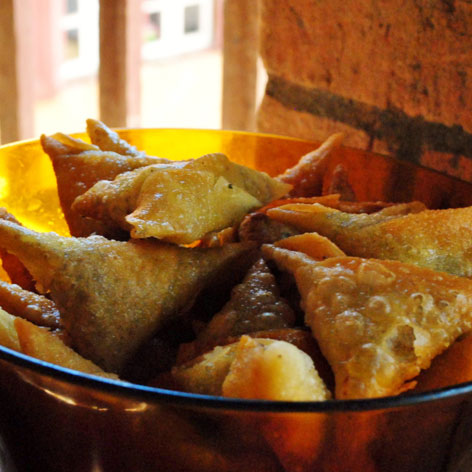
Sambosa
Like nem, samosa-esque sambosas are another culinary example of Madagascar’s unique position between two continents, and the strong Asian influence on Gasy snack food. While sambosas lack the hot spices of their Indian counterparts, vendors almost always have a small jar of hot peppers to compensate. Commonly stuffed with potatoes and ground beef, this savory snack warms the belly on cold Antsirabe nights.
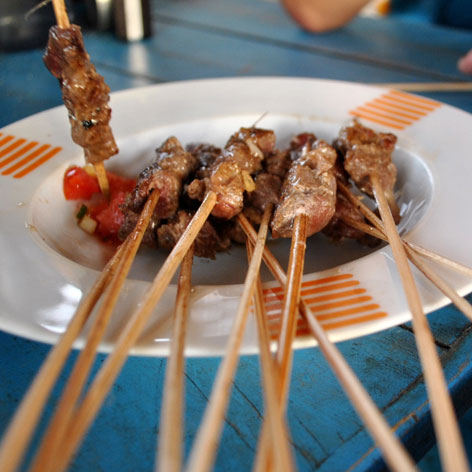
Brochettes
For those hankering for more than just a sprinkling of meat in their deep-fried nem or sambosas, food stalls are filled with brochettes, or miniature kebabs (the name reflects Madagascar’s past stint as a French colony). On the coast, they’re frequently made with fish, while in the highlands vendors skewer freshly sliced beef, onions, peppers, and tomatoes and grill them over an open flame, giving them a toasty chargrilled flavor.
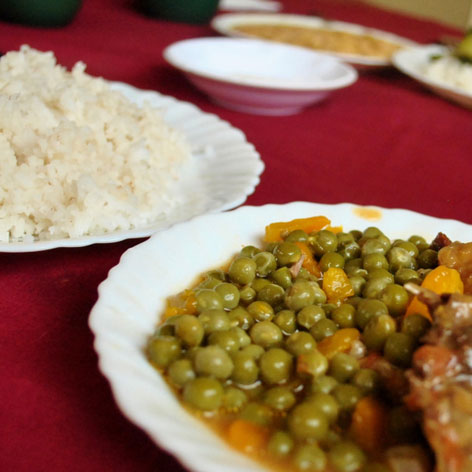
Vary sy loka
Of course, no real meal in Madagascar, the highest per capita consumer of rice in the world, is complete without a heaping bowl of plain, unsalted rice, or vary (coconut milk is sometimes added in coastal regions), and when you step off the streets of Antsirabe, dozens of living-room-esque hotelys (restaurants) entice passersby to indulge in a real, Malagasy, rice-laden meal. Common laoka, which translates as the food you serve with rice, include pork with leafy greens, beef with sauce, chicken with peas, dried fish, beans, or a dish of ground-up leafy greens known as ravitoto. Rice is so significant in Malagasy cuisine that people will often invite others to dine with them by asking “Will you eat rice (with me)?” But the streets are another story, filled with snacks hot, crunchy, meaty, and—for the most part—rice free. Mazatoa! (Enjoy!)
A version of this story originally appeared on beatnomad.com.
All photos by Jessie Beck.
About the author: Originally from Washington D.C., Jessie Beck has followed her love of travel across the globe to Malta, Costa Rica, Seattle, and most recently Madagascar as a Peace Corps volunteer. When not biking or sampling local cuisine, she blogs about life as a nomad at beatnomad.com.










.jpg)
